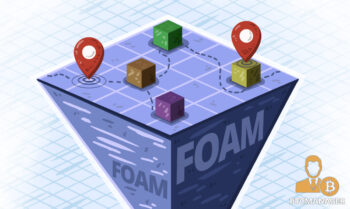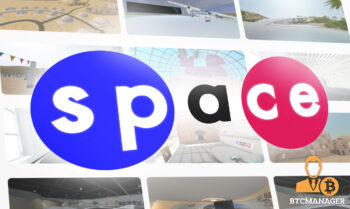
2018-7-22 19:00 |
Location services and mapping data have become integral parts of the real-time execution of global financial systems, enabling a near omnipresent view of the world while providing supporting digital infrastructure for a range of businesses.
Ethereum-based “FOAM”An Ethereum-based project by the name of FOAM looks to upend the current hierarchical structure of the Geospatial data market through the development of a blockchain based Proof of Location protocol.
The goal of FOAM is to create a consensus-driven map of the world via a decentralized and censorship-resistant framework. Instead of relying on government or private interest GPS satellite systems, the project hopes to leverage a distributed network of low power radio transceivers to provide real-time spatial triangulation for users.
By incentivizing the deployment and maintenance of these radio beacons, dubbed Zone Anchors, FOAM plans to bootstrap a real-time positioning system that will provide users with Crypto-Spatial Coordinates while reimbursing network participants through the distribution of FOAM tokens.
These coordinates can be used as raw data for navigational instrumentation, similar to new GPS early devices or utilized to deliver compressed human-readable data, similar to Google Maps. By taking CSC positioning data and combining it with Token Curated Registries, platforms will be able to correlate valuable data-driven informatics into contextualized map data in the form of Points of Interest.
To accomplish this feat, the network utilizes cutting-edge developments in Low-Power Wide-Area Network radios, allowing transceivers to large blanket areas with low bandwidth radio signals. These extremely efficient antennas transmit information in the magnitude of kilobits per-second over distances exceeding 700 km while maintaining a minuscule Internet of Things sized form-factor.
Significant developments in signal modulation and detection have allowed these devices to transmit and receive clear signals that were previously well below the noise floor of background radiation. This enables the new class of radios to be incredibly energy efficient while being able to potentially last years on a single battery.
In addition to requiring minimal amounts of power, LPWAN devices have the advantage of incredibly competitive pricing when compared to previous generations of radio technology. Due to the meagre amounts of energy emitted, the technology occupies an unlicensed band of the radio spectrum, drastically reducing the costs of production, creation, and distribution of LPWAN devices.
To accurately determine users positions between anchors and triangulate their location relative to a signal source, the FOAM protocol will also need to maintain a high precision synchronized clock that system its uniformity across the network. To tackle this issue, the FOAM team developed a Byzantine fault tolerant clock which self-stabilizes based on the overall consensus of the network, self-correcting for faulty input or malicious information.
In conjunction with its role in enabling reliable redundant geospatial data, this consensus-driven clock could be used as a reference source for time-sensitive precision based systems, such as stock exchanges, to provide supplementary confidence data. Such industries currently utilize atomic clocks
Should FOAM succeed in providing a viable alternative to the current dependance on GPS, the project positions itself as becoming one the first Crypto Primitive assets by providing reliable and accurate service that supply data that is vital for the regular functioning of other services.
The post “FOAM” – The Geospatial Cryptocurrency Primitive appeared first on BTCMANAGER.
origin »Global Cryptocurrency (GCC) на Currencies.ru
|
|



